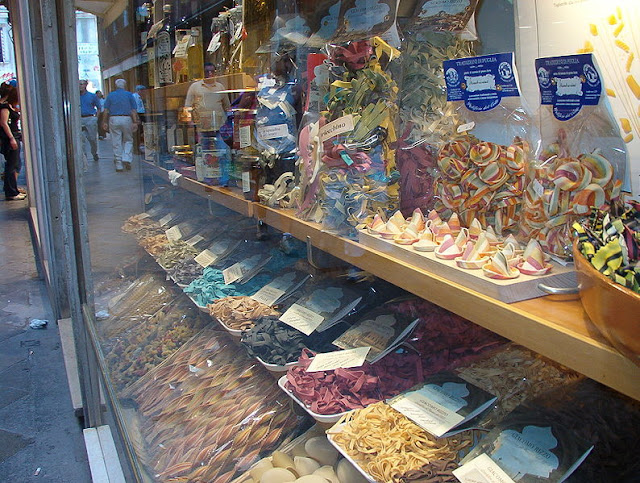FUN FACTS ABOUT PASTA
History
1. The Chinese are on record as having eaten pasta as early as 5,000 B.C.
2. Contrary to popular belief, Marco Polo did not discover pasta. Although Marco Polo wrote about eating Chinese pasta, he probably didn't introduce pasta to Italy. In fact, there's evidence suggesting the Etruscans made pasta as early as 400 B.C.
3. In the 13th century, the Pope set quality standards for pasta.
4. Thomas Jefferson is credited with introducing macaroni to the United States. He fell in love with a certain dish he sampled in Naples, then promptly ordered crates of "macaroni," along with a pasta-making machine, sent to the States.
5. It was not until the 1700’s until tomato sauce was included with spaghetti in Italian kitchens.
6. The first American pasta factory was opened in Brooklyn, New York, in 1848, by a Frenchman named Antoine Zerega. Mr. Zerega managed the entire operation with just one horse in his basement to power the machinery. To dry his spaghetti, he placed strands of the pasta on the roof to dry in the sun.
7. Christopher Columbus, one of Italy's most famous pastaphiles, was born in October, National Pasta Month.
Cooking and Eating
8. One billion pounds of pasta is about 212,595 miles of 16-ounce packages of spaghetti stacked end-to-end enough to circle the earth's equator nearly nine times.
9. The average person in Italy eats more than 51 pounds of pasta every year. The average person in North America eats about 15-1/2 pounds of pasta per year.
10. The most popular pasta shapes in the U.S. are Spaghetti, thin spaghetti, Elbows, Rotelle, Penne,Lasagna
11. Cooked al dente (al-DEN-tay) literally means "to the tooth," which is how to test pasta to see if it is properly cooked. The pasta should be a bit firm, offering some resistance to the tooth, but tender.
12. Most pasta is made using wheat products mixed with water. Other types of pasta are made using ingredients such as rice, barley, corn, and beans.
13. Egg noodles contain egg; almost all other dry pasta shapes do not. By federal law, a noodle must contain 5.5 percent egg solids to be called a noodle. So without egg, a noodle really isn't a noodle.
14. To cook one billion pounds of pasta, you would need 2,021,452,000 gallons of water - enough to fill nearly 75,000 Olympic-size swimming pools.
Production
15. There are more than 600 pasta shapes produced worldwide.
16. The total amount of dry pasta consumed in the U.S. in 2009 was 1.4 billion pounds
17. According to the International Pasta Organization, Italy is the leading pasta manufacturing country, with the US in second place. Brazil takes the #3 spot, followed by Russia and Turkey
18. Pasta is not fattening. According to the US Dept of Agriculture, a 1/2 cup serving of cooked pasta (spaghetti) contains a mere 99 calories, less than half a gram of fat and less than 5 milligrams of sodium.
19. A study published by Diabetes Care concluded grain-based foods (especially whole grain varieties) with a low glycemic index, such as pasta and oats, are beneficial for people with diabetes.
20. Lycopene, a potent antioxidant found in tomatoes, acts to repair damaged cells in the body. This positive e!ect of lycopene this is thought to help prevent prostate cancer since prostate cancer risk is lower in men who frequently eat tomato products.


Comments
Post a Comment